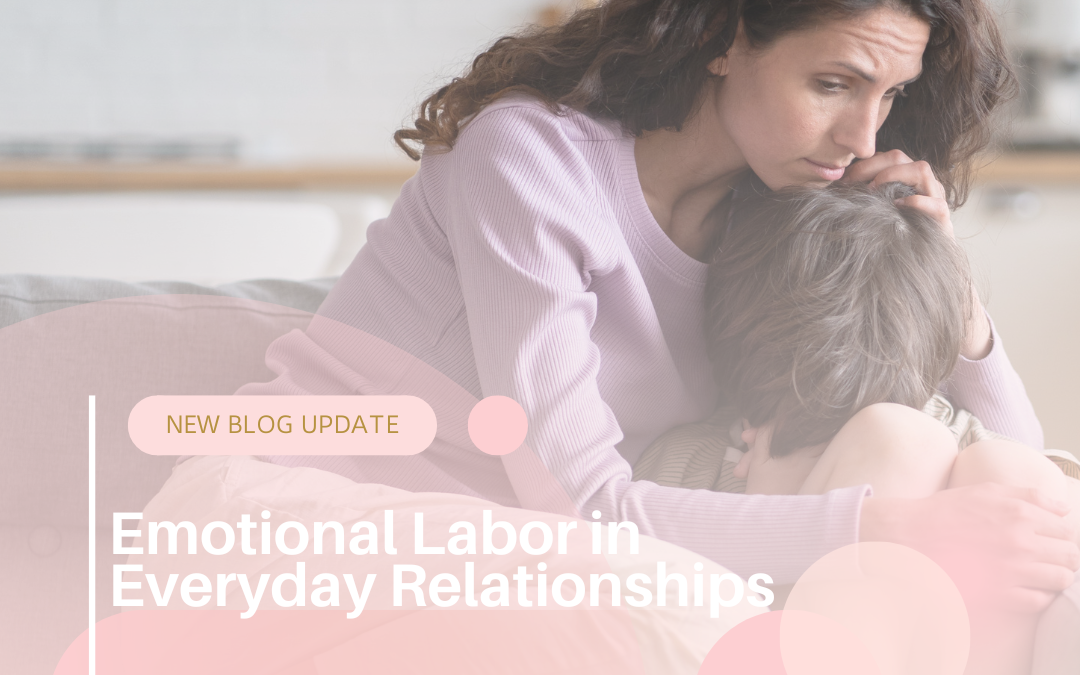Most of us think of “labor” as something we do at work—answering emails, managing tasks, showing up on time. But there’s another kind of labor many people carry, often without recognition: emotional labor. It’s not on a paycheck, it’s not listed in job descriptions, and it’s not something we clock out of. And it’s especially present in our everyday relationships—with partners, friends, family, coworkers, and even strangers.
What Is Emotional Labor?
Emotional labor is the invisible work of managing emotions—both yours and other people’s—to maintain peace, comfort, or connection. It can look like:
-
Soothing someone else’s outburst while suppressing your own feelings.
-
Being the one who always checks in, remembers birthdays, or resolves conflict.
-
Managing the emotional atmosphere in your home, workplace, or group chats.
-
Smiling when you’re not okay, just to avoid “bringing others down.”
-
Anticipating needs, apologizing to keep the peace, or over-explaining yourself to avoid misunderstanding.
While the term originated in workplace studies (think customer service workers having to “fake smile”), it’s now understood as a much broader concept—and one that heavily impacts mental health.
Why It’s a Mental Health Issue
1. It’s Exhausting
Constantly tuning in to others’ feelings can leave you disconnected from your own. Over time, it contributes to emotional exhaustion, compassion fatigue, and even burnout.
2. It Feeds Resentment
If you’re the “emotional glue” in your relationships, you might find yourself feeling unappreciated, unsupported, or even taken for granted—especially if your efforts go unnoticed or unreciprocated.
3. It Reinforces Unhealthy Dynamics
When one person is always doing the emotional heavy lifting, it prevents others from growing or taking responsibility for their own feelings. This can lead to codependency or imbalance in relationships.
Who Carries It Most?
While anyone can take on emotional labor, certain groups are more likely to carry it disproportionately:
-
Women and mothers, especially in caregiving and household roles.
-
People in marginalized communities, who often feel pressure to “make others comfortable” or downplay their own struggles.
-
The “strong friend”, who appears emotionally stable but is silently carrying the weight of everyone else’s problems.
-
Helpers, healers, and therapists, who give a lot but may struggle to receive or set boundaries.
What Emotional Labor Looks Like in Real Life
-
You’re in a group chat and feel the need to smooth over tension after someone sends a passive-aggressive message.
-
You sense your partner is upset, so you walk on eggshells to avoid conflict—even when you’re struggling too.
-
You spend more time managing how your truth will make someone feel than actually speaking it.
-
You feel guilty for needing space or saying no, because you’re used to being the “go-to” for everyone.
How to Protect Your Mental and Emotional Energy
💬 Acknowledge It
Just putting words to it—“I’m carrying a lot of emotional labor”—can be a powerful first step. It validates your experience and brings the invisible into view.
🧱 Set Micro-Boundaries
You don’t have to go no-contact to protect your peace. Try small steps like delaying your response, saying “I trust you to figure this out,” or even leaving messages on “read” without guilt.
🪞 Check in With Yourself First
Before asking how someone else is doing, ask yourself: How am I doing? What do I need right now? Learn to center your emotional needs without shame.
👫 Invite Balance
If you’re always the one holding space, gently encourage reciprocity. Ask for support. Express your needs. Let others show up for you, too.
Final Thoughts
Emotional labor isn’t bad—it’s part of being human and connected. But when it becomes one-sided or constant, it can silently wear you down. It’s okay to care deeply for others without constantly managing their emotions.
Your job isn’t to be the emotional thermostat for the world. You deserve rest, reciprocity, and relationships where you can be real—not just regulated.


Recent Comments